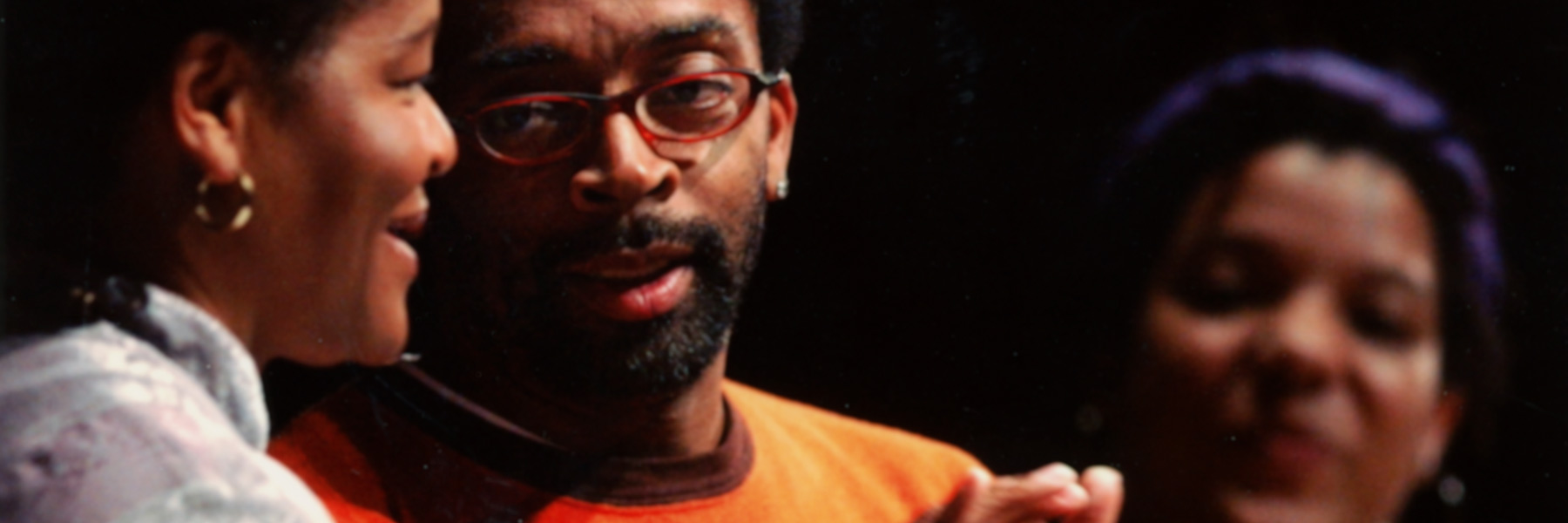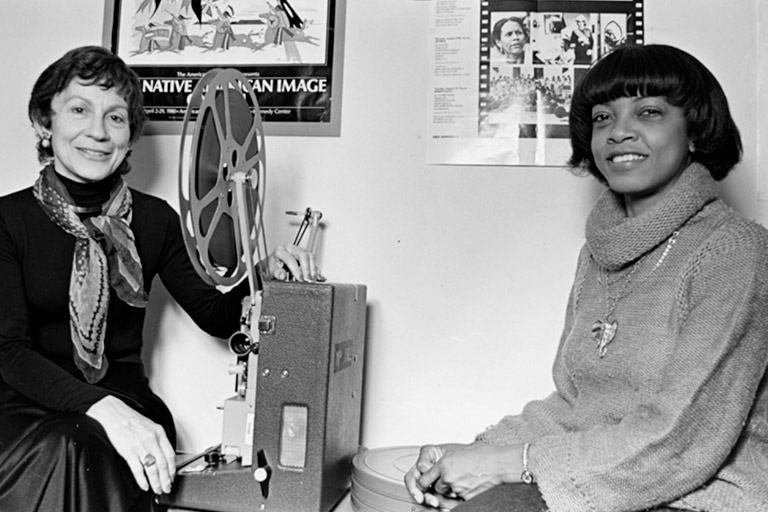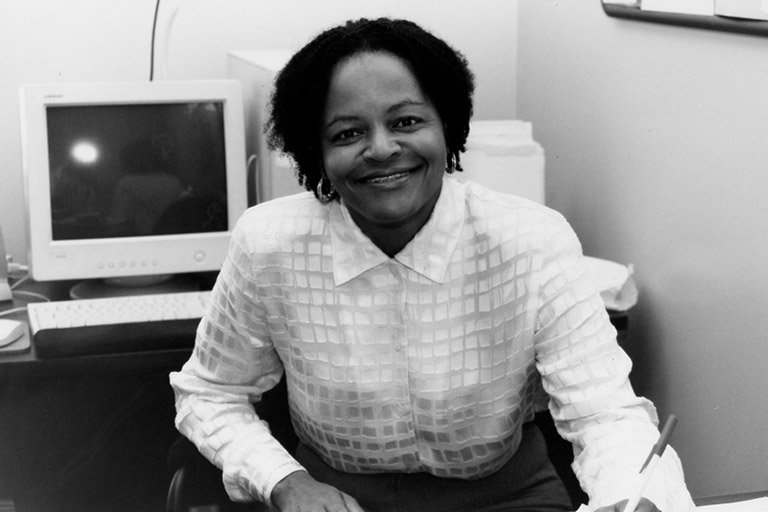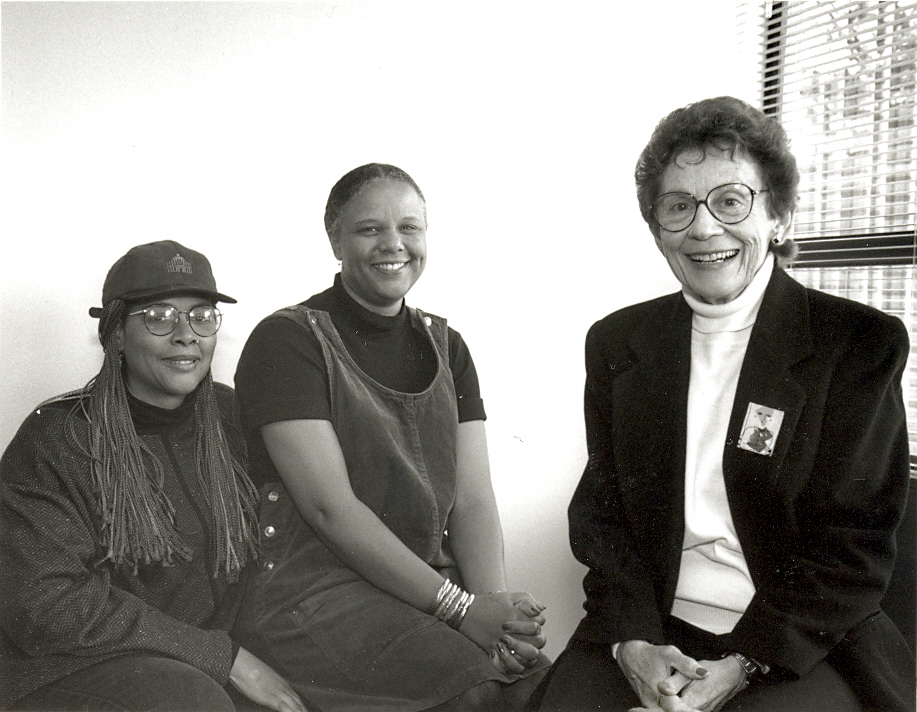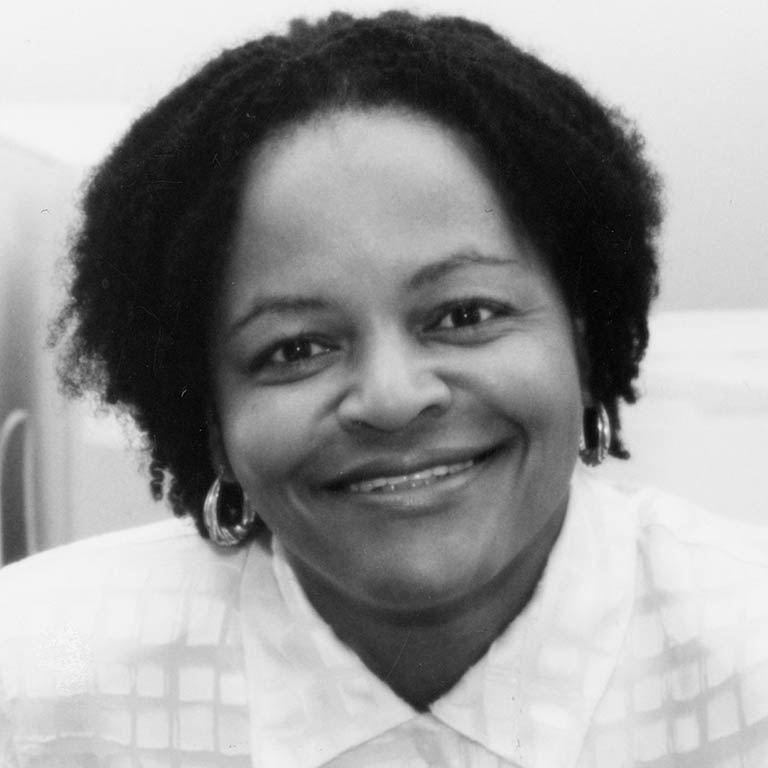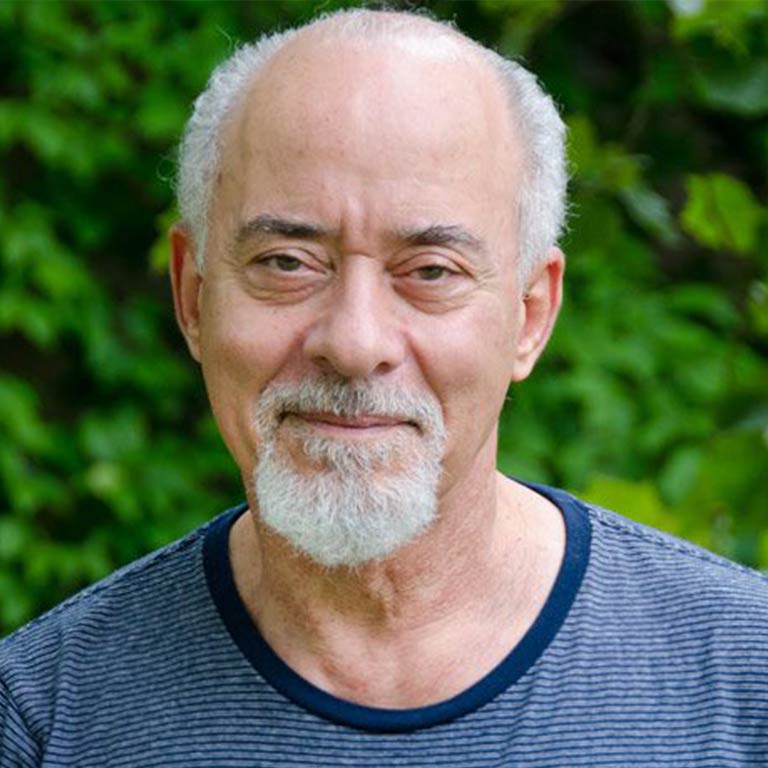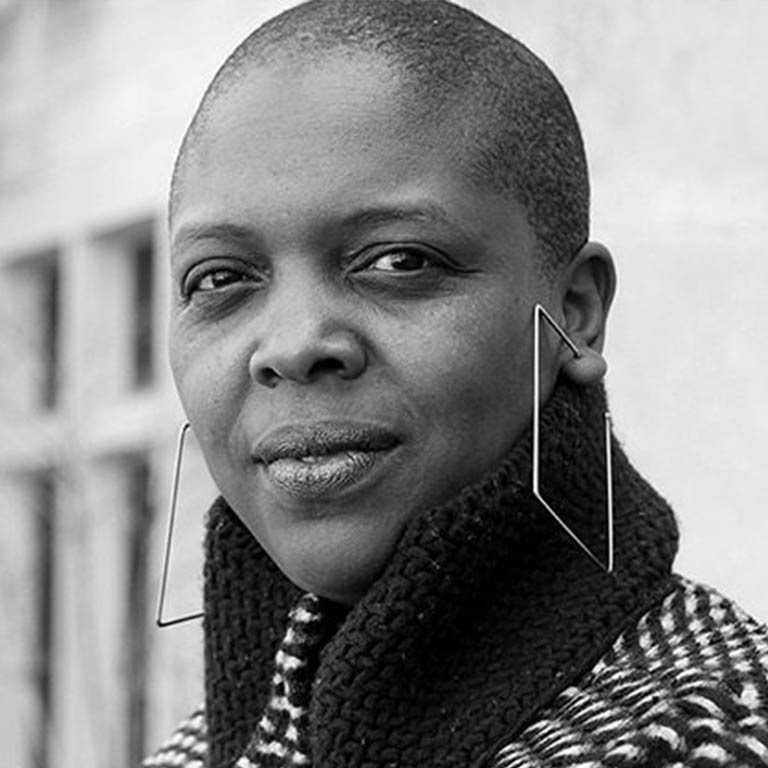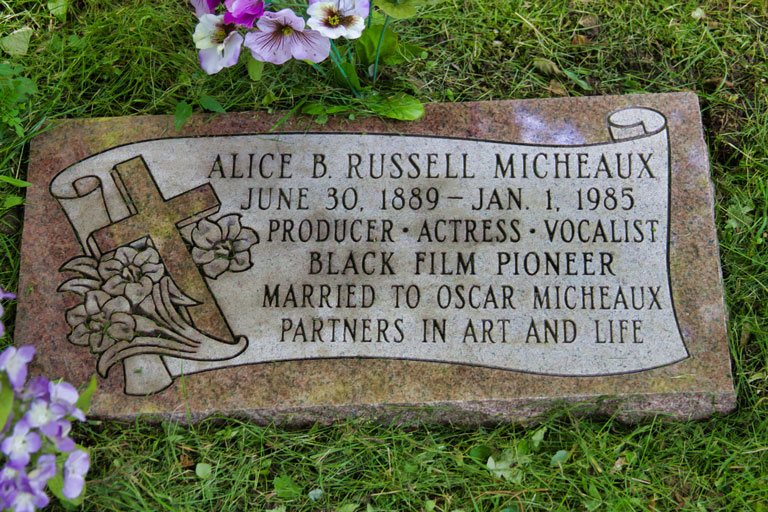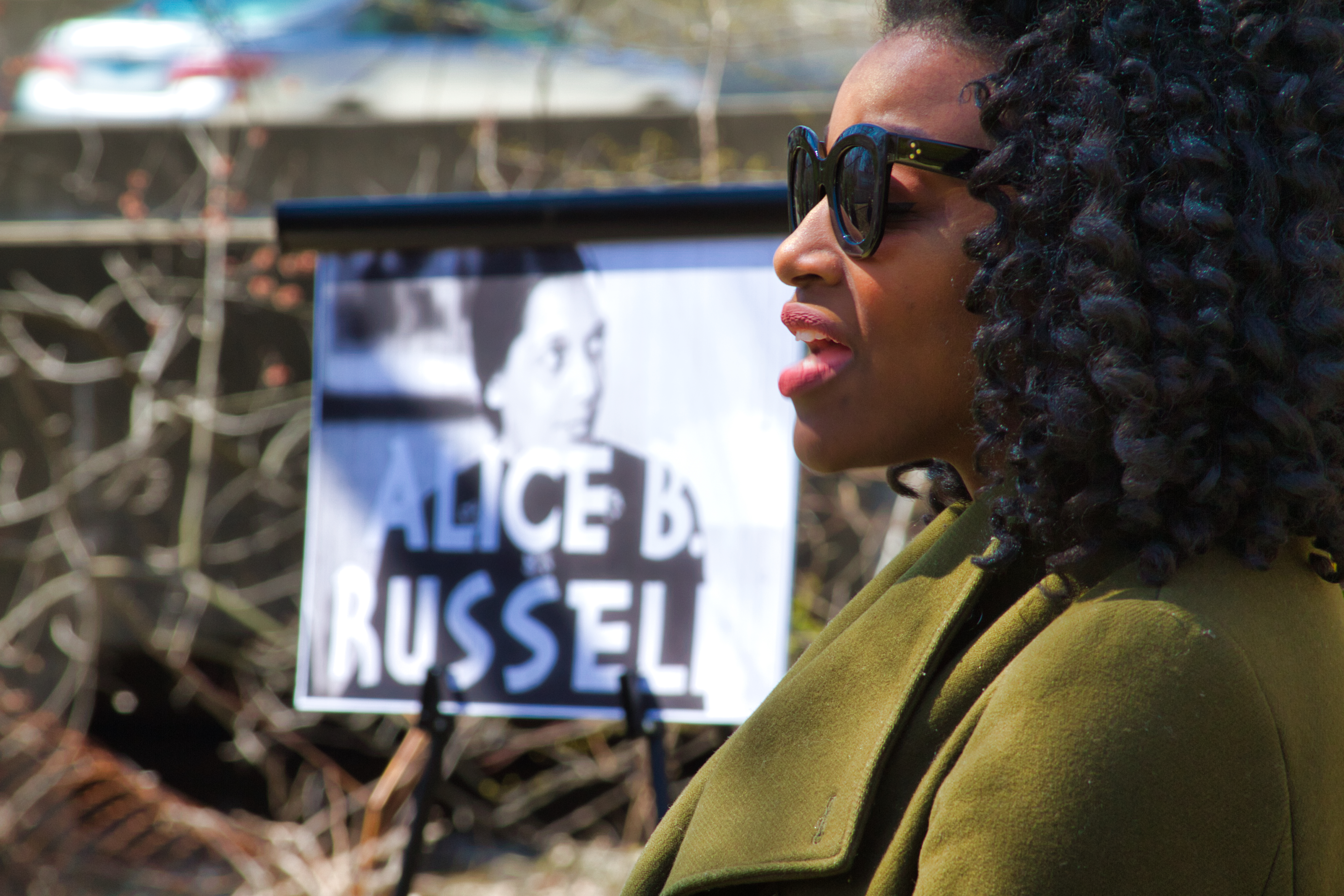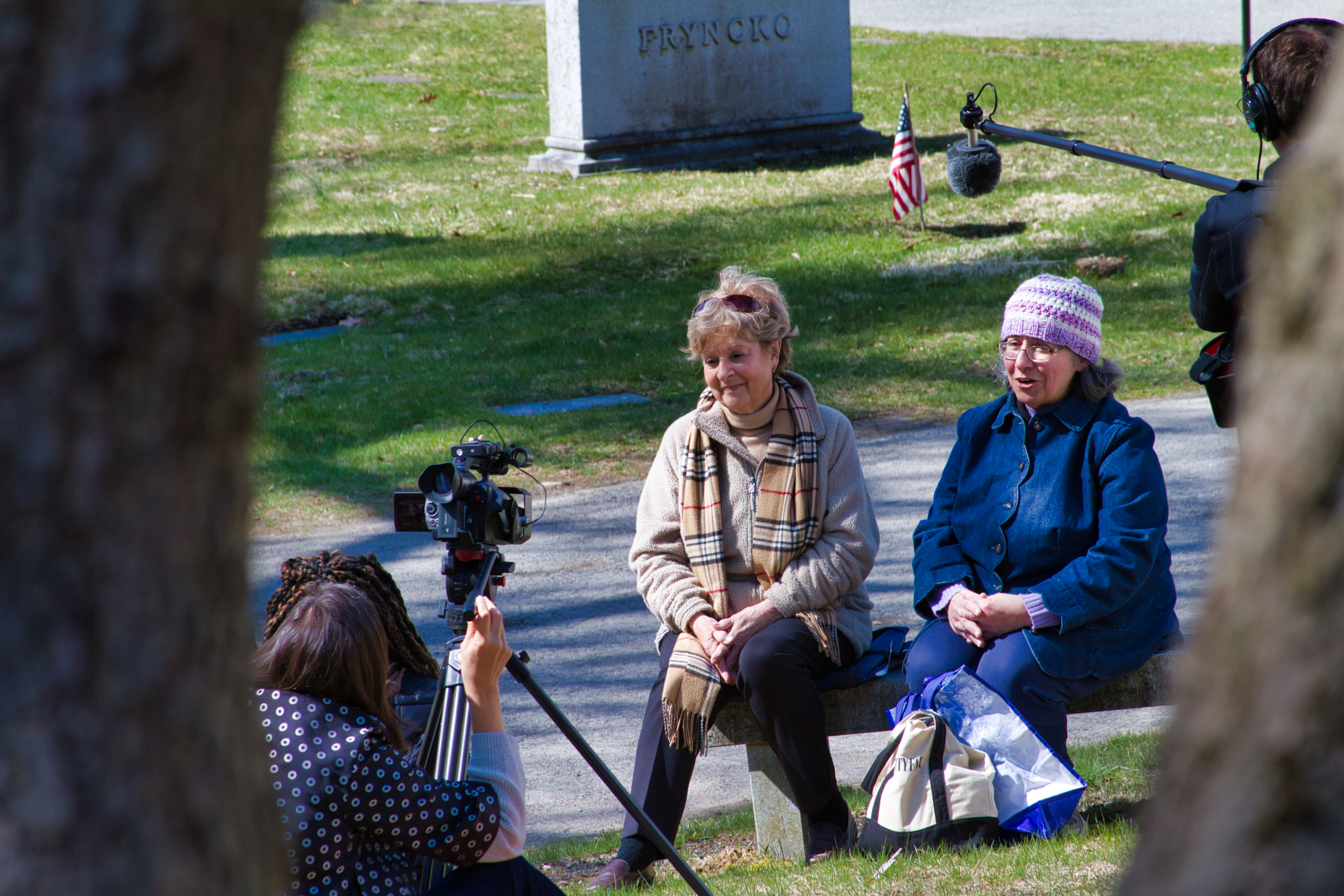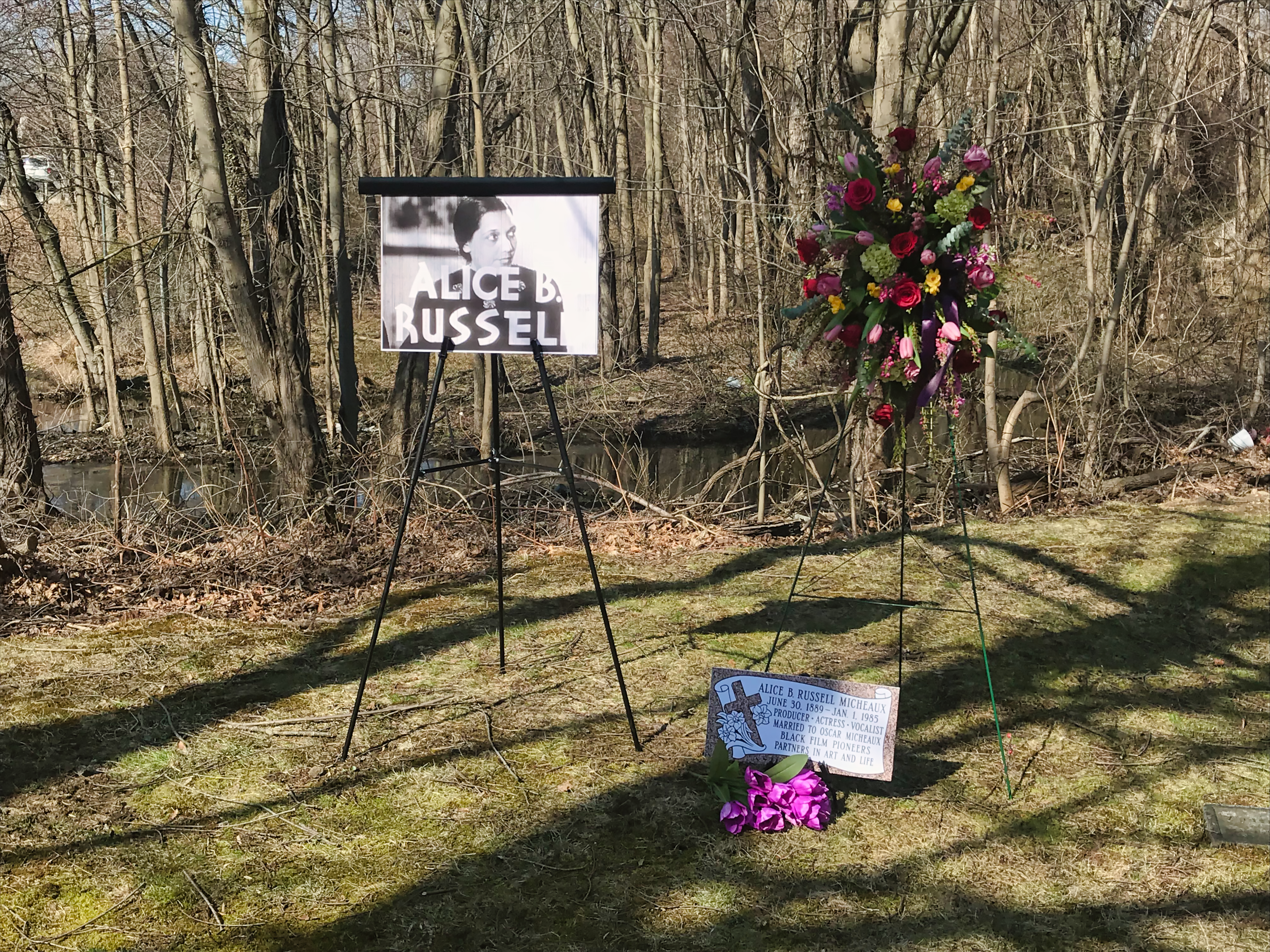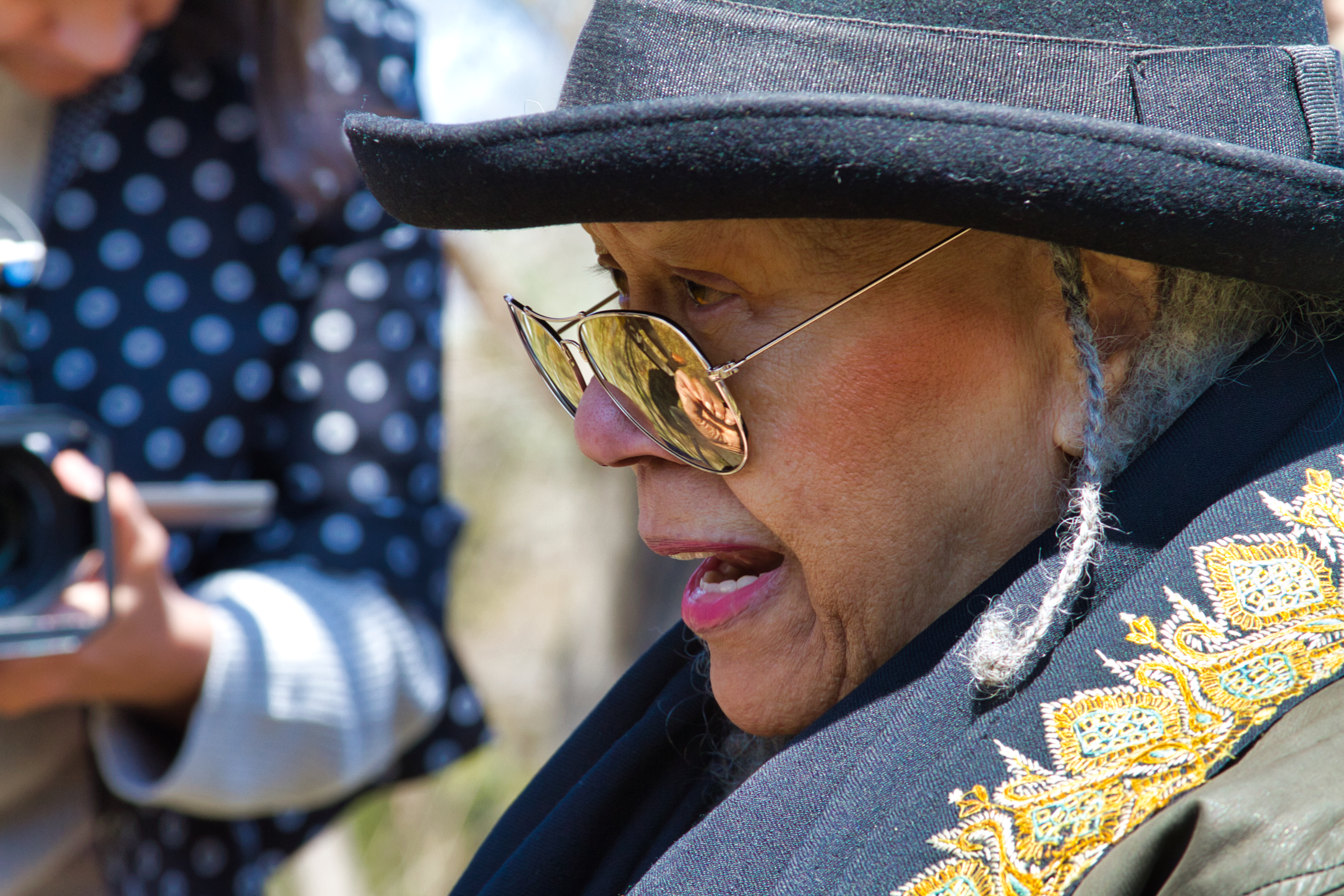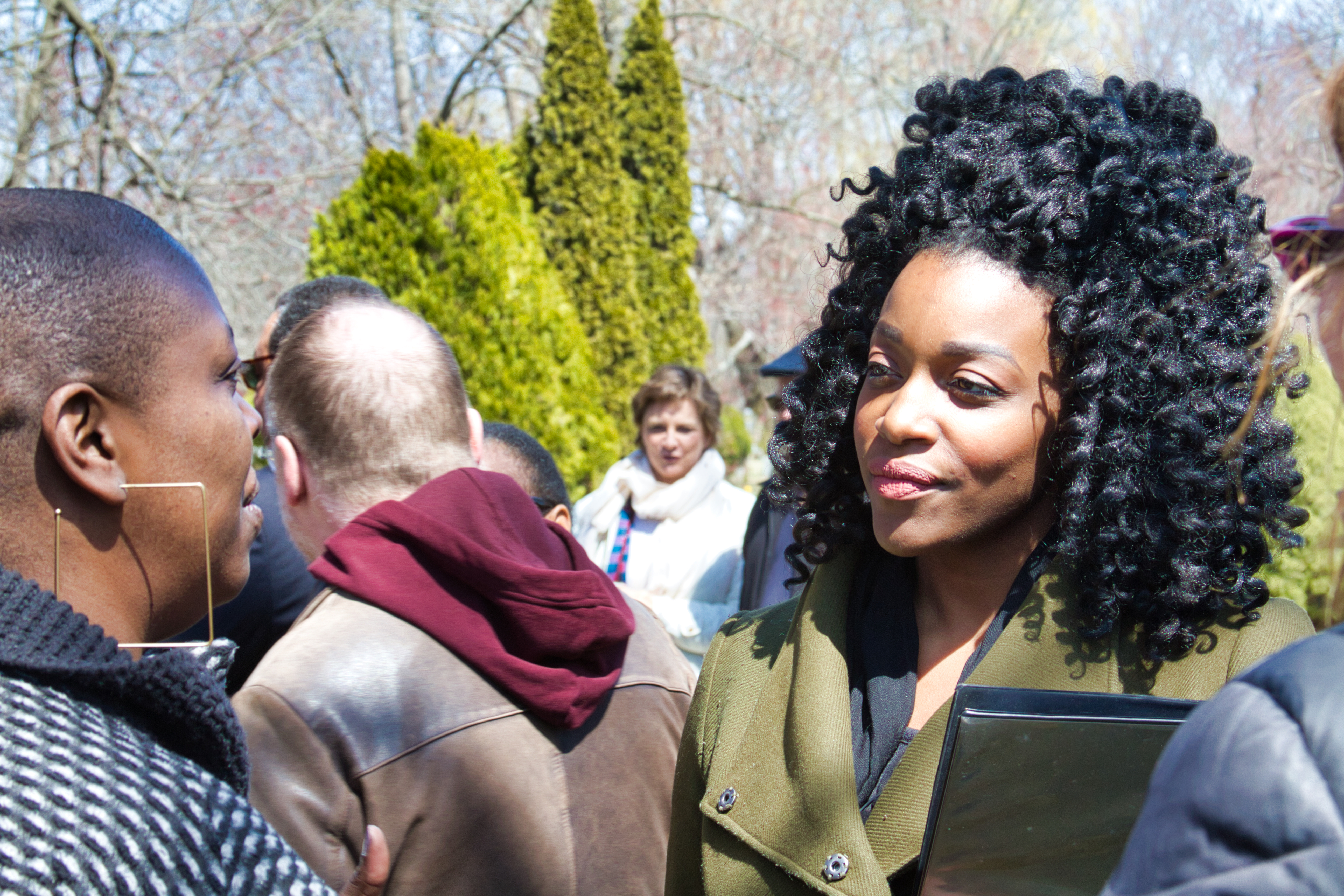Description of the video:
Interview of Kathleen Collins
Interviewer: Phyllis R. Klotman
Date: 4/10/1984
Phyllis Klotman: We have with us in the studio today Kathleen Collins, playwright and filmmaker, and also faculty member at the City University of New York. We know that you received a number of awards for your plays and for your films. I'll just mention a couple of the films that you've done that I know about. Losing Ground, which you wrote and directed and co-produced, and The Cruz Brothers and Miss Malloy which you co-wrote, produced, and directed. I want to ask you few questions that have to do with how you got into filmmaking. And I suppose there was a connection with the teaching, but will you give us some, some of the background that will -- Give us the road.
Kathleen Collins: Well, in film – In film work, it was a -- It was a -- Not a natural segue. I had never occurred to me when I was doing my undergraduate work. I think it didn't occur to me anytime I was growing up that I would ever make movies at all.
PK: You didn't have a Hollywood thing.
KC: No, I didn't. In fact, I wasn't even a great moviegoer as a young person. I was raised in sort of a fairly religious home. You didn't go to movies on Sunday, and it was better if you went, perhaps, one or two Saturdays a month. You know, so there wasn't even any particular fanatic connection to seeing movies. I mean, I've heard other filmmakers say that they used to sneak out every opportunity they could and sit in the back if a movie theater and, you know, see the same film 10, 15 times. But I – I had no -- No such obsession at all. In fact, I don't think I even thought of cinema as an idea, certainly not as a discipline, except by accident. When I'd gotten a fellowship to go do my Master’s in France and I was planning to do it in French literature. And one of the elective courses was a course called “French Literature and Cinema,” which I took only because some fellow students said something about the teacher being terribly good or, you know, wasn't -- Again, it was…
PK: [unclear]
KC: Absolutely not, no. And I actually, since I was very -- I was always an avid reader and I was really going to do my work in France literature. The hook that probably got me in the course was the fact that she focused on literature that had been adapted…
PK: To film.
KC: To film. So, what you would do is you would read certain novels, short stories that had been adapted. Madame Bovary. And then you’d go see Madame Bovary for two thousand times. And I guess I got fascinated first by the process of the translation of what happens when a literary work is translated into film because it really becomes a process of translation. And the woman who taught the course was brilliant. And I had a very good eye, I began to see, for watching film. And then it just sort of naturally evolved as she -- I liked her enormously as a teacher. And she just kept encouraging me to take more courses that were involved in cinema and then theliterature kinda got dropped and I ended up – Though, I ended up, when I did my thesis, I ended up doing my thesis on Andre Breton and the surrealists and the cinematic notion behind surrealism as they practiced it, actually. And, but I still had -- That was entirely theoretical background, though I had begun as a kind of sideline to take a couple of courses over at [unclear]. And it really wasn't until I came back in the States and thought I'd look around and see what was available. And I ended up with a job as a researcher at National Educational Television.
PK: Oh, I see.
KC: And it was by accident that I stumbled into the cutting room. They -- I had done all the research for project for which they did not have a production assistant or she got sick at the last minute and they slipped me into the cutting room to help the editor organize the footage because I knew -- I knew it best because I had done…
PK: All the research.
KC: All the research that had been around while it was shot. And that was when I really discovered editing, which is probably the first obsession I ever had, which was when I saw what actually happened to the footage, the process of putting it together. I thought that was the most -- I thought that was magical. And it's really the magic of being in that cutting room that I remember now. I mean, I came home to my husband and I said I would do anything to be able to edit. And he said, you don't have to do anything, but probably keep going back every day
PK: Is that what happened?
KC: And that's exactly what happened. He offered me a job paying me something like $60 a week and I was finishing my doctorate and I had a couple of teaching jobs, teaching French. And I mean, I -- I mean, I was capable of making quite a bit of money at that point in my career and my parents didn't understand what in the world I was doing making $60 a week shuffling film cans, is really what you do in the beginning. And he was a lovely, lovely man. He was one of the first black editors. At that time, there were only about four Black film editors in all of New York City. And I think I was around the fifth, because we're going back 1965, ‘66.
PK: Yeah. That was the question I was going to ask.
KC: Yeah.
PK: The middle 60s it was going on.
KC: Yeah. I'm dating myself a good 20 years. But it was really…
PK: Experience.
KC: Experience anyway. But it was his -- And he sensed that I had it, what he said. That's how he put it, that I would make a good editor. And he really took me through the whole union process. And in about two years, I had my card as an editor, which is really quite fast. It takes four or five years, but he said that you're not, you know -- You're not a kid and you've got all this other background. So, the two then merged. And I had -- In the late sixties, I had a strange background. You see, there weren't any film courses in any universities when you're talking ‘65. I mean, it didn't exist as a discipline. So, I had done all his graduate work in it, and then I became an editor and I was on staff at NET and I freelanced, and I made my living as a film editor for several years. But somewhere around 1971, when they were opening up all these film courses and the universities were still looking for academic people to teach them who had at least some semblance of academic credentials. I was, I guess, a kind of a rarity at that point because I got offered a lot of jobs. And I finally took a job at City University and I've been there teaching simultaneously about ten years. And then eventually I ended up making films probably more out of the fact that I was in a university structure where a lot of -- A lot of equipment and students were available to me and it made it a lot easier to make that transition. So that’s the rough background. And, of course, the commitment to teaching, for some reason, has remained with me, in spite of, I suppose, my heart being very much committed to making films. But the teaching is still very much a part of it.
PK: Let me ask you just a couple of things and then I'm want to go back to the idea of teaching as being -- Strong commitment.
KC: Yeah.
PK: You made Losing Ground. Was that the first film that you made?
KC: No, that’s the second.
PK: So, the other one…
KC: Cruz Brothers was the first one, yeah. I didn't want to -- I had started writing plays way before any of, any -- I was writing plays probably all the time I was a film editor, writing plays, short stories. But, and I had several short stories that I considered adapting to film. But going from being an editor and a teacher to being a director was still quite a leap. And I really didn't want to make that leap with material of my own that I might get too close to, because I was really going to try and figure out what the director does that, you know, the editor understands intuitively when he or she actually cuts the footage, but doesn't actually execute. And I didn't know that much about working with actors. And there were a lot of sort of sidelined skills that I felt I needed to understand. So, I wanted material that I really wasn't emotionally committed to. This is really why I originally did The Cruz Brothers.
PK: The way it would…
KC: As if it was mine.
PK: Yeah.
KC: Yeah. And so it was a deliberate decision. I liked the Cruz stories very much. It's one of my favorite novels, but in the way you like something that's not that close to you. You can, you can – And so I had a tremendous amount of fun doing the script because suddenlyall that work and adaptation I had done years ago…
PK: Yeah, when you're…
KC: All of a sudden came back to help me shape the thinking. I mean, in fact, I requested of Henry Roth about four drafts of the script. And then I said in the fifth draft, would you mind if I did the final rewrites and then if I’ve done anything you like, you're perfectly welcome to change it.
PK: And did he?
KC: And he was perfectly agreeable. And he did like -- I think there were -- I think we argued over -- I think we argued over the ballroom scene because a ballroom scene is entirely my idea. But I really thought that the film required a metaphor for the old ladies. The movie's about three Puerto Rican brothers who are hired by a dying Irish lady to renovate her mansion. To renovate her mansion. And I really felt that her death should have one symbolic moment where somehow what happens between the three boys and her is kind of magical.
PK: It has that.
KC: Yeah. So, I -- The ballroom scene was really my invention. And he quite -- Finally he understood and when he saw the film, he really loved it. He was always nervous about it until he saw the film. And then he says…
PK: That’s that lovely -- It's a fantasy.
KC: Yes, it is.
PK: Yeah, it works so well.
KC: Yeah, and it allows you to see her before she dies. Probably the way, maybe, she would've liked things to have to have been at some point.
PK: But Losing Ground then was all yours.
KC: Yes. And then I just went ahead and wrote an original screenplay for that next movie. I didn't even go back to any of the short stories. Though, ironically, the title “Losing Ground” came from a collection of short stories that I had written several years ago, which are really, in a way, unrelated to what happens in Losing Ground. But I liked the title a lot. And I felt that in some ways Sarah was in the same predicament as the heroine of these stories. They're about 20 stories and they're all about various catastrophes in the life of this very young woman trying to fall in love and making a mess of it 20 times.
PK: [laughs]
KC: So…
PK: That’s a lot…
KC: It’s a lot, but I suppose if one went back to one’s youth, you could probably add up the 20 times with variations.
PK: I would really like to go back to how you relate the filmmaking and your creative interest in that with the actual teaching. And we do have a few students here from the class, which explores the Black aesthetic. And I have seen how you work with them, teaching them -- Well, it's screenwriting, but it's a great deal more than that.
KC: Yeah, it really is because what has happened over the last 10 years is that when I first started teaching film, like, you know, like anyone who first starts teaching, I don't think I knew anything about teaching film. I knew a great deal about editing. And I understood all of the aspects of film that go into editing, which really are all the skills: editing, sound, direction, camerawork, all the rest. And since I had done all that graduate work, I had a very good theoretical background. The aesthetics courses never bothered me at all. I had no problem with them. The production courses that I began to teach, it troubled me a great deal because I didn't know how, in the beginning, to teach a student how to use film as a language. Which is really the problem, and it's a problem with a great deal of film teaching that goes on now. You actually have to teach a student to develop a vocabulary that is the equivalent in cinematic terms of vocabulary you use in any language class, in teaching how to write a short story or a novel or a play.
But developing a process, an evolutionary process, which is really what I ended up doing, because when I was there – When I first came to City University, it was a young department. We were all trying to figure out what film was in terms of teaching it. And, of course, the history and aesthetics courses where the easiest ones to teach me because you could go back to the history of cinema and build them on that. But the production courses were generally very sloppy. And the students would take a course, say, in 8mm cinema and then they take a production course in 16, but there was no thread going through all these classes. And what I did with another teacher, woman named named Jo [Tavner] who was there at the same time. And we were both young and we were both -- Had both come out of film schools, that film school experience. She'd had more production work in a film, in a university sense, and I'd had more in a practical sense. And we actually sat down for several months and thought out how you should introduce film in such a way that students could gain a systematic sense of it as a language and then experiment in their films with the language. So you would never say to a student, “go out and shoot and then we'll look at your footage.” You would say to a student, “we're going to examine the frame.” Now you're going to shoot thinking about the frame or thinking about one concept to the frame.
What we ended up doing was duplicating the process by which one actually experiences film when you're watching it, but on an unconscious level, and taking it apart bit by bit. So now, actually, what I do when I teach -- In a way doesn't matter what course it is. I try and work the students into a grasp of the language. That the fact that a language is actually being presented them -- Presented to them. And the more sophisticated they can become about apprehending that language, the more critical they can become when it's use sloppily, when it's used incorrectly, when it's not really being used at all. And therefore they become their own best critic.
PK: Would you be willing to show us, just to demonstrate how you do that?
KC: Well, I suppose what I do is I start by -- I really start with -- In almost every class I teach, I start them with a basic vocabulary. That there are – Just as if you were learning English, you've got to learn where to place a comma and a parentheses and a period and when a new paragraph begins, in a basic intro class, which is the first one I teach at City and I --- And I've always taught that class every year because what happens by the end of the year is they become very excited about it as a language. And usually we end up recruiting the larger -- Largest number of our film majors, those who hadn't come in already committed, out of that intro course. And what they do is they shoot, five little three-minute films. And in each one of those films, they examine a concept that is central to understanding how film evolved as a language. The first one is an exercise and it really points to – It’s the only one I need to give you because it really points to how the process works.
They look at the first films that were ever shot. They look at Lumieres’ early newsreel footage and they look at Melies’s first example of A Trip to the Moon, which is really the first fiction film, in a way. And what they begin to – And the exercise is called stationary versus moving camera. And what they begin to perceive is that in the initial stages, that film evolved as a language, but it evolved as a language out of technological developments. In the first films, the camera does not move.
PK: Right.
KC: It's simply places -- Takes what could be called either a long shot or a medium shot position. It holds that position and whatever movement happens, it happens by virtue of the performers, either clowning, moving, moving in and out of the frame, coming forward, right? But that if you go from those two films and you look at Porter's…
PK: The Great Train Robbery.
KC: Great Train Robbery. For the first time, you see a real effort as the cowboys are running down the hills it’s most -- It's the simplest, first cowboy movie ever made, but it has every convention of every cowboy movie, ever, ever, and forever and ever. And what happens in that movie is in the beginning, he does a usual stationary camera. The actors become overly dramatic because there's a distance between them and he camera and the camera isn't moving, therefore there -- And it's silent, therefore, their gestures have to be bigger than life.Then at one point, there's this funny little moment when the bad guys quote unquote, are running away down the hill and the camera almost -- You almost feel like it's an instinct. It starts to pan with them. It starts to move with them and suddenly your involvement changes. Your involvement changes from just simply being an objective observer to someone saying, “Oh, well look at those guys going down the hill.” So the sudden -- In that one, and that's a technological advance. In other words, they had to find a pivot on which the camera could swing in order to be able to get it to move. And you could go on from there indefinitely. They had to develop a wheel of some kind on which that you could place the camera in order for it to begin to dolly. They had to develop a zoom lens in order for it to be able to move in and out.
But each one of those technological advances was actually dictated by some emotional need, which you can really feel, in Porter from the beginning. He wanted -- He wanted you – He wanted to move with those characters because it -- It gave something to the story that the story didn't have before.
PK: And needed, yeah.
KC: And needed. And so, you have simultaneously a language evolving out of technology. And in that -- And the first exercise they do, and then that really sums it up. They do an exercise called stationary versus movement. In the first three minutes, they must take an activity and film it from a stationary perspective, utilizing every conventional possible movement that you could use without having the camera move. Meaning people can move them forward or backward in the frame. They can move in and out of the frame. They can move from foreground to background. It's up to them to become very imaginative about the stationary camera. And it's meant to be a simple exercise. It can be a girl on a swing. It can be two guys playing tennis. It can be a man running around a track. But it's meant to be a very simple exercise. The only requirement is, is that when the camera moves, they must repeat the same exercise. They can't change the exercise. They can't change the activity whatsoever. If you had a guy running around a track five times, he has to keep…
PK: He has to keep running around five times.
KC: But what happens to that activity when the camera is able to move? When it's able, all of a sudden the dolly or the pan or the track.What happens to the viewer's involvement in the activity? What is the -- What happens in terms of what you can say about the activity,which is the final measuring rod. And what – And at the end of the exercise they really begin to understand the process of making a statement on film. And that statement can come out of how they choose to move, what moves are made because they've been able towatch this activity when it was still. And what's the statement? What is the linguistic statement when the camera’s absolutely still? And from there, we go onto a whole series of exercises, but that is the -- But the principle is, how are you going to learn to master this language?
And the final exercise is they have to do a self-portrait essay in which they are required to tell me, in a silent movie, by the way. None of this is done with sound. The entire first semester is done silent. In the fifth exercise, they do an exercise called self-portrait. And I put on the board between five to 10 pieces of information that I wish to have about them before the exercise is over. Well, it's as if they were writing an essay. And they, by that time, have begun to understand sufficiently the conventions and the language to be able to utilize that language in actually writing what they -- What I define as a film essay. Some of them do it brilliantly through light by then because they've gone all the way through the use of light and how light is part of that statement, and how space is part of that statement, as well as movement.
PK: Movement.
KC: And usually those exercises are really extraordinary. They're usually the ones I keep in my private file because they're so – They’re real little gems by them. And it basically proves the point that that film is a language.
PK: In working with the students here, you had them actually beginning with description.
KC: Yes.
PK: They had to describe each other, right?
KC: Yes.
PK: We have a few students in the studio with us.
KC: Uh-huh.
PK: Why don't we bring them in and talk a little bit about what it was that you were trying to get from them. Okay?
KC: Sure. Sure.
PK: Two students have joined us, Brenda Jones and Renee Simmons, who are in the class, and I'll turn over to you, Kathy.
KC: Oh, all right. [laughs] Well, actually, what's interesting about teaching both of you – Actually teaching your whole classroom. There are about 20, 24, 25 of us, aren't there all in all? The most interesting thing is that here at the university, unlike at City University, your training is mostly in theory classes. And you don't really have production, film production here. And so, it was interesting to me to take a group of students who have done a lot of theory work in film and watched a lot of movies and then all of a sudden try and put them on the other side of the spectrum and get you involved in simply mastering in the language, thinking about the language, thinking about shots, and thinking visually on your own and deciding what kind of choices you would make when you actually have to do it yourself. You know, if it’s your scene rather than a senior just watching. And I was sort of curious as to how – You know, what was happening in your minds as all this was going on. I mean, just how it's -- How you've reacted to, what, four or five sessions of being bombarded with terms like medium shot, close-up, long shot, and so on and so forth.
Renee Simmons: Well, for me, it's been interesting because of the fact that it takes more than just aiming a camera at something and shooting it, you know? There’s so much involved, you know. And when we’re doing -- Like for instance, when you gave us the exercise in class where we're given some dialogue…
KC: Uh-huh.
RS: And we're given a situation from the dialogue and we're told to shoot the scene and try to get the best, the most out of the environment as well as the dialogue. I mean, so much to consider, what's going on between two people.
KC: Yeah.
RS: What's in the background…
KC: That's right.
RS: What do you want to emphasize, you know? And so, you begin to think a lot about how you really want the audience to see this, because they see only what you give them to see. And if you want a certain mood established, it's up to you and your camera to come up with that.
PK: Does your background in theater…
KC: I was just thinking that…
PK: …Help you visualize things? Because the students come from all areas and I'm not sure that there is anybody else in there who has your background in theater.
RS: Well, for me, that assignment was so difficult because I had to go and play [Mary Anne Thomas]. It was [Mary Anne Thomas] talking about breaking up over a love affair. And I had to say…
Brenda Jones: In the museum…
RS: Right. I had to kind of like pretend to be Mary and do the dialogue as an actress in order to…
PK: That’s interesting.
RS: …Get a feel for what kind of mood I wanted to create.
KC: Uh-huh, uh-huh.
RS: And then, once I did that, because I would say it over and over my head: how I would say a line, what what kind of emphasis would I give it.
KC: Yeah,
RS: Then I had to step back from that and say, how now do I want the audience to see it?
KC: How they see and experience it. I see what you’re saying. Yeah.
RS: So it was like, I would always look at what was given for the actor first.
KC: Yes.
RS: And then step back and say, what the camera – What I want the camera to see.
KC: Right, uh-huh. That's interesting. Did you find that – Because your exercise yesterday was so great with the [Mary Anne] Thomas? Were you in class when we were doing that? You weren’t in class…
BJ: No,
KC: If you were, we were working at it because we had this set and everything.
BJ: First I looked at the paintings, like the environment. That’s what I've learned the most in the class. Nevertheless, how much environment is a part of the dialogue and the way, you know, people interact?
KC: Yeah, uh-huh.
BJ: And I find that fascinating even now looking at TV and trying -- If I see a painting or something in the picture, in the frame…
KC: Yeah.
BJ: I look at what they're saying and see how it interacts with that. So that's what I want. And I looked And looked at the paintings and I looked a certain lines that they said and try to match the line up with the painting so that there'd…
KC: Ah, so there’d be, like, a reverberation between what they -- What they're talking about, and what you're actually feeling visually at the same time. Yeah. That’s an interesting focus because the environment -- I suppose the environment, in a way it's really -- It's really everything that you have to offer in film. Using environment, the sense of space, light, as this sort of outer dynamic.
PK: Sound also.
RSL And it’s funny because even looking at this set right now when we're up in the studio. Behind you is a bookshelf. And it just gives the impression of being learned.
KC: [laughs] Uh-huh, right.
RS: You're, like, surrounded by this background of books and, you know, I would take that in consideration if I was doing a film where I wanted you to get the, you know, kind of persona of being someone from…
[crosstalk – unclear]
RS: I would shoot with that kind of background as opposed to maybe, you know, something that wouldn't give the impression.
PK: That's very interesting because when we try to do that, we're just teaching the language of film and not the language of film production, right? It's very hard when you try to get students to focus on what is in the background. They are so foreground. Their awareness is so much in the foreground with what’s going on. They forget that the visual image is a total image.
KC: Uh-huh.
PK: And that if there’s a photograph on the wall that is usually a meaning for it or a painting.
KC: Yeah.
PK: And that exercise, which I really would like to see, has a great deal to do with those three paintings that you described to them first.
KC: Yes, exactly. I mean, in fact, the paintings are really the key because I give you that – I give you the paintings in order to force you to do exactly what you've done, which is to take the environment into consideration in how it will play either for or against the line, sharpen the lines, give them more meaning. But you point to something that -- It's a trick that I learned about watching film years ago, which is that you should never just watch a film one time. If a film -- If you really like a film and it's -- When I was taking this, adaptation course, I had to see Madame Bovary 15 times, for example. And it's a standard way of teaching film in Europe. And I do use it at City and I have had to fight and get it down to five because they balk. But the students who become the most -- The strongest visual students are the students who sit and watch and then they come back and then they watch again, and they come back and they watch again. And they will tell me -- In fact, I once taught a course in which they only saw three films throughout the whole semester, but they saw each one of those films around ten times. And they were given sheets and I would break down what they were to look for. First time there was a screening, they’d just screen it generally. Second time they would screen it, they were to screen it absolutely in terms of compositions. Third time in terms of sound. Fourth time in terms of performance, you know. And each time – And by the ninth and tenth times, they actually begin to get excited because they said that the film they saw the first time was not anywhere nearly as interesting as the film that they began to see unfold by the eighth and the ninth time. They began to understand little sound motifs. They pick up sound effects. They pick up how these sound effects were acting on their perception. Because they knew the story by then. They didn't have to worry about just getting a whole story…
PK: What happens.
KC: What happens, what the plot is about. By the second or third time, they’re through with that. And then they really begin to dissect it and take it apart. And it is fascinating the mixture of elements that had been playing to make that story interesting. One girl ended up doing her final paper entirely on sound effects. And she just couldn't believe how important the sound effects in that movie had been in terms of how she actually reacted, you know, to the visual. So it's one -- I don't know. It's one handy tool. You might try that just with films you really like. Go see them several times. It's just something to see it change for you. Because it has to be a film that’s interesting.
BJ: I think the way you gave us the camera positions and all of that…
KC: Yes, yeah.
BJ: And to put into our writing was a lot better than just going home and reading it and trying to memorize it and then do nothing else worked with it.
KC: Yes, right.
BJ: I mean, after the class is over, so what? We’ve just learned some terms and that was the end of that. But we’ve gone to put it into our own thinking and write things the way we would want it to be
KC: To be if you were actually writing the script, yeah. That – Then I'm glad of that then because that's – You never know who might become a scriptwriter all of a sudden. Never know. There's a funny kind of awakening that could happen in any class, which is probably the most exciting thing about, you know, teaching is that you drop – You know, you drop something, which is just what you feel is important and then someone picks it up and then they run with it and they run with it from their own excitement, in their own awakening. And you just never know out of that class, I have some famous scriptwriter coming up.
RS: That's right.
KC: Very much happened.
RS: What I found so interesting is the fact that we all have the same assignment. Like, for instance, when we had to do the dialogue between the two women who were friends and have to make certain -- Give certain information to the audience. It's so -- It was so nice to hear all of the different ways that people using the same beginning material came up with, you know, their scene. Some were just so hilarious and the dialogue that they used. The slang terms [unclear]. The use of wine in the setting and what they were doing and it was just so nice and I learned a lot from that exercise, [unclear] gave me more confidence in my writing because it got me to see that we all look at things so differently. It doesn't mean that any one was…
KC: Better or worse now…
RS: It’s just that’s the way they saw it and that's the feel they got from it and I might get a different one. Doesn’t mean mine is any worse.
KC: That’s interesting.
PK: That happened for me when I listen to the descriptions…
KC: Ah-ha!
PK: …For the exercise in which you had to describe someone in the room very concretely without use of…
KC: Physical description.
PK: No physical description and few adjectives of any kind. And then we are – Everybody had to say who that who that person was. And it was – You know, you had to work succinctly and concisely. You only had three sentences. And even if you were used to semi-colons and you knew, you know, you could…
[laughter]
PK: But that in fact, you had to convey something that I thought was very concrete about an individual. And, there again, you have --And each person's perspective of someone else.
RS: I know. And it was [unclear] the one about you.
PK: That I felt was illuminating in a way.
RS: The student did about me and I was like…
[crosstalk]
RS: That, I think broke the ice for everybody in the class. That was it was like, how people look at you.
KC: Yes, right, yes.
RS: The same way the camera -- How the camera sees you is, you know – There could be 20 people in the audience and they all can see you in such a different way unless you make definite decisions as a filmmaker, to say, “I want them to see her in this way and I'll try my best using sound, light, position, all those to get it across.” So…
KC: Yeah, that’s very fascinating because every now and then I get to teach a directing class. And one of the things I do in that class is I give them all the same script. Like, I'll write a small script for them to do and it'll be maybe four scenes. But it'll have a beginning, a middle, and an end. And they all get to shoot this same script. In other words, I've put in all the camera angles, right? But I haven't made decisions about the environment. I haven't made decisions about the actors who will play. That is something to watch at the end. And usually there are only six or seven students in that class. It's always a small group because we shoot footage and everything. We get seven different films. Same script, same basic shots. They've got to follow the shots that are laid out, unless they have a real strong argument for it, then they can make a change coming out in their directing. But they can cast it any way they want. They can set up the environment as they want. And I'll say it takes place in a cafe or it takes place in a bedroom and so on, so forth. And we, you know, we pretty much can build that. They can come and build the sets the way they want. It’s seven different films. It is just amazing. I mean, it is really amazing and the choices they make in terms of line delivery, you know. It's just something to watch that they have real all started from the same script. And they love to see -- They can't wait to when we screen these films. They just can't wait to see what somebody else did. And when somebody else does something that they think they should have thought of, they just, “Oh, that was a terrific way to do it.”
PK: [unclear] good experience.
KC: It is a – You can really feel it. And they end up, you know, generally being very proud of most of their choices. But it allows them -- It's kind of noncompetitive because what they actually end up doing is appreciating the material. And then they begin to appreciate in each other where somebody really made interesting choices. Choices that made the script come alive, you know? And they, and they really learn from it that way. It’s really fun.
PK: Do you have any questions that you might want to ask Kathy about the way she's going to shoot her next film?
KC: Considering you’ve been reading the script.
RS: Oh, that’s the one – The sample.
KC: Yes, the five-page sample. The first five pages of the next script. I suppose I shouldn’t have said that, shouldn’t I have? [laughs]
[crosstalk]
PK: [unclear] this great this great illumination that you have here. I have the script that was not revised and these are five pages of the revision.
KC: Right, yeah.
PK: And it’s fascinating to see just the changes that she's already made. Now, I don't know whether you're going to make more changes before the actors get it.
KC: Very rarely. From the final draft, the only changes now will be between the cinematographer and myself. We will have about a month of daily conferences and he will then suggest changes based on, you know, the design or if he has any thematic changes or wants in different scenes. We’ll argue it out
because we're both also co-producers. So we'll argue the script out for about a month. And when that's done, that document will be the one we'll shoot from almost like a Bible. Really, almost quite faithfully. Maybe in Hollywood, they don't have to do that because they have a lot more money. But an independent movie, you really can't go in and wing it. You have to really believe in the script and you have to believe that the script has in it pretty much everything you want to say. You'll cover yourself to the degree that, since it's a diary, I'm going to cover myself with several what they call wild shots of Carolyn, who's the main character, either writing in her diary somewhere in her room or somewhere else so that we can fill
in her mind when we need to. But outside of that, we’ll really shoot from the script pretty, pretty rigorously. And if we change, it'll be off of what the script dictates. It won't be all of a sudden inventing anything new. I don't think you can make independent movies any other way unless you have a script that you really feel very, very strongly in and it's very tight and you work from there. But getting to that script can get two, three, four drafts. This is really the third, quite radical, draft from the first concept. The concept being simply, we need to do this film about a woman reminiscing through her diary of one summer in her life. But originally -- And it's adapted, actually, from a novella that I wrote several years ago. It’s one of the few things that I again went back to adaptation with, yeah.
PK: Do you -- I guess we can get some sort of summary since you brought up independent filmmaking. It is categorically different from working in Hollywood.
KC: Absolutely.
PK: You made a conscious choice to stay independent.
KC: I don't think it really is a choice. I think, you know, if – There aren't many ways to go to Hollywood and make movies. I mean, adding to the fact of color and I mean, that's not even get into that, and being a woman and all the other things. But only at one point in time might I have made a more mainline decision. And that would have been at one point, I was offered a producer-ship at a major television network. And it was when I had been editing for several years and I had done a lot of research and associate producing and I was offered a very, you know, substantial position. And that was really the turning point for me because around the same time I was offered the job teaching at the same time was offered. We decided as a family to leave the city and move to the country. But it was a turning point in that I did consciously turn that job down. I did say that I don't really feel that whatever creative work is going to come out of mewill come out successfully if I have to work off of other people's formulas. But it is not an accident. The sense that even had I made that decision, I might presumably be producing, I don't know, television drama. I don't know I would've ever gotten a chance to direct at all. I wouldn’t have got a chance to write my own scripts. I don't think that the avenues would have been opened to do any of the films I've done at all. I don't think anyone would have bought those ideas [unclear] terrific. And so, to that degree, I consider it a necessity that I do it independently and I can't imagine ever varying from that. I mean…
PK: What’s the hardest thing about making…
KC: The process? Raising money. Now that's only hard in that it's time consuming and nerve-wracking. It's not really hard emotionally. It's just you really want to do it and you get ready and you rev up and it takes a long while to convince the outside world that this is worth investing in because you don't have really anything to offer them. You're not a fat -- You're not good -- It's not gonna be like real estate or commodities or something. They're not going to make a huge return on their investment. So the reasons for it are difficult to sell. You don't have a fantastic product. But I would say the hardest part of the process
is the actual shooting because it's -- If you don't have a lot of money, you have to be so careful when you shoot and you have to think all the time. And you have to have a little bit of luck on your side, you know. If you have a lot of outdoor shooting and you've only got six weeks to shoot this and six weeks in which you have the money to pay people, you you've got to count that the gods aren't going all of a sudden send you rain for six weeks. There, there are a million natural and technological disasters that can happen during a shoot. The malfunction in the camera. A beautiful take and the sound man tells you that he had a mic malfunction, you know? Or the cameraman tells you, yes, it was a lovely take, but they were all off their light plots and so the lighting is going to be dreadful. We have to do it again. It’s a kind of little – What I call the scenario of little disasters that a company, you know – The shooting, at which I really – That’s what’s so nerve-wracking. If you had tons of money and it didn't matter and you could reshoot and hire endlessly, you wouldn't have the kind of tension that you have when you have only a certain amount of time, only a certain amount of money, and you have to commit everyone to that box. That's nerve-racking. After that, the footage is yours. You know, you've got it in the editing room. Nobody can bother you there.
PK: Any last piece of advice for students…
KC: Who want to be filmmakers?
PK: Who want to be filmmakers,
KC: Be very organized. It's really a question of focusing these so sharply. And you can see from the class how many things you have to think about. Well, multiply that going on a set and then the cutting and music and all the additional things that come through the whole process. And you better like it. [laughs]
PK: Thank you for being with us.
KC: It was delightful.
PK: And thank you.




